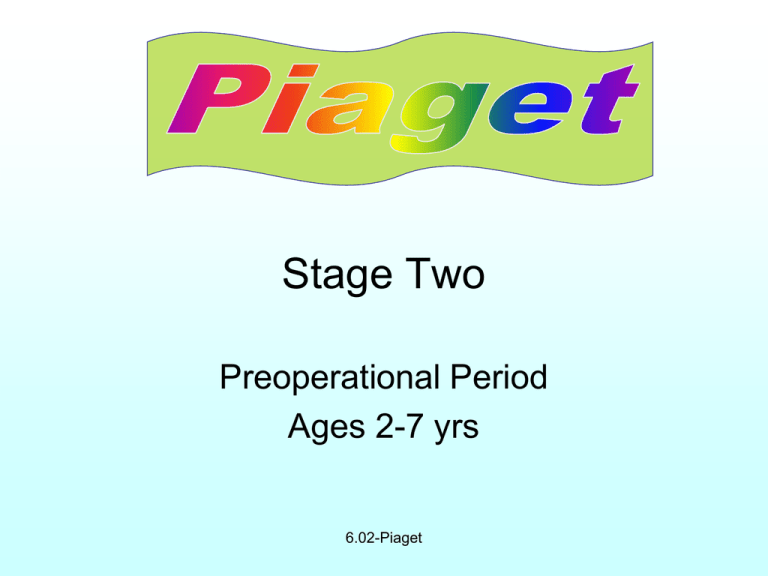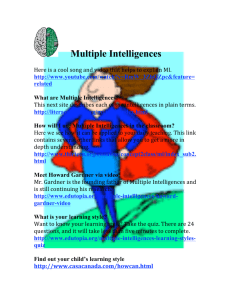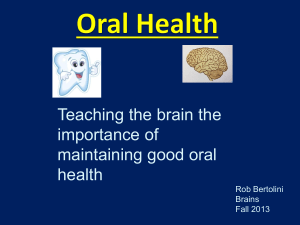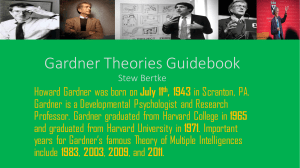Stage Two Preoperational Period Ages 2-7 yrs 6.02-Piaget
advertisement

Stage Two Preoperational Period Ages 2-7 yrs 6.02-Piaget • Assimilation and accommodation • Children form concepts in their minds • Concepts: general categories of objects and information 6.02-Piaget All things in the air are birds. Then they learn the difference between birds and planes. 6.02-Piaget These are all apples because they are red 6.02-Piaget Basic mental operations start replacing sensorimotor activities as the primary way to learn. 6.02-Piaget Children learn mostly by language and mental images I “eated” my apple No, it’s “ate” Then I “ated” my apple 6.02-Piaget 6.02-Piaget • Make-believe play is used to create and express all kinds of mental images 6.02-Piaget Everyone views the world like I do. 6.02-Piaget Egocentrism • The sun follows them from place to place and goes to bed when they do •Problems with reversibility—can’t see the world from other's perspectives 6.02-Piaget Children are prone to thinking errors Just as a walking toddler is prone to missteps 6.02-Piaget I don’t want to go to sleep! I’m not tired! use feeling to solve problems rather than logic He hurt my feelings so I hit him! 6.02-Piaget • Begin learning multiple classification– the ability to understand that an object may fit into more than one category 6.02-Piaget • Begin learning seriation—the ability to order groups of things by size, weight, or any common property •For example arranging beads on a bracelet from smallest to largest • Preschool children cannot arrange themselves by height 6.02-Piaget •They think the same amount of liquid is more when poured into a tall thin glass. •To them taller means more! 6.02-Piaget Another example of conservation 6.02-Piaget 6.02-Piaget They use synergetic reasoning: A break in logic, changing set of criteria Example: Mother usually makes dinner before dad comes home so making dinner causes dad to come home. 6.02-Piaget First, you put all of the white powder in a bowl. Then you pour milk into it. Stir and pour in metal cups that are hooked together. Now hurry and put in the oven because we are late for school. 6.02-Piaget Intuitive reasoning— They guess!! Which line has more marbles? 6.02-Piaget My birthday is before Christmas and after Halloween 6.02-Piaget 6.02-Piaget •Children may not be aware of what is real and what is make-believe 6.02-Piaget In general we learn: • Children learn to master one skill before another • Children learn in their own ways • And not as adults do!! 6.02-Piaget You can tell a lot about cognitive development by looking at a child’s drawings. 6.02-Piaget 6.02-Piaget 6.02-Piaget 6.02-Piaget 6.02-Piaget Is that a drawing of two caterpillars? 6.02-Piaget 6.02-Piaget Multiple Intelligences Howard Gardner’s Theory of Multiple Intelligences 6.02-Gardner People have a unique blend of intelligences. The biggest challenge is how to use the blend of intelligences. 6.02-Gardner Eight Multiple Intelligences Verbal linguistic Logical-mathematical Spatial Musical rhythmic Bodily-kinesthetic Interpersonal Intrapersonal Naturalist 6.02-Gardner Gardner claimed that the eight intelligences rarely operate independently. They are used at the same time and tend to complement each other as people develop skills or solve problems. 6.02-Gardner These intelligences, according to Howard Gardner, are amoral (not doing the right thing) They can be put to constructive or destructive use. 6.02-Gardner Eight kinds of intelligence would allow eight ways to teach, rather than one. This would allow children more ways to learn and express themselves. 6.02-Gardner




